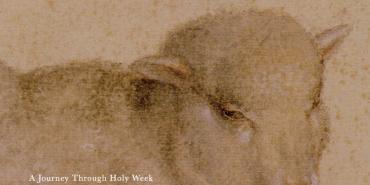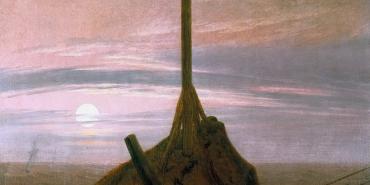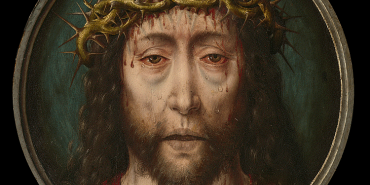Communal Worship that Is Christian

In one setting, the sun towered above, beating down upon us with an intensity impossible to ignore. We found our way to a piece of ground high upon a hill where a 20- x 30-foot tattered tarp provided shelter from the oppressive sun. Of course, it could do nothing to block out the thick humidity that wrapped around us like a suffocating blanket.
Still, the people came, one by one, young and old, from all sides of that hill. Their sanctuary had been destroyed in a recent hurricane, but that did not stop them from gathering to sing, to pray, and to hear the good news in communal worship.
The order of worship was simple. A welcome and greeting was followed by a cappella singing that bellowed from the core of their being and could be heard all over the hillside. The Scriptures were opened and a sermon of challenge and hope was offered. Prayers of thanksgiving, of intercession, and confession brought the heavens down to earth with a powerful presence.
After the dismissal, we were sent to be God’s agents of reconciliation wherever the Spirit blew us.
At another setting, the climb to the top of this particular hill was ordered by steps, steps that had been worn through the many centuries of persons ascending to worship. Walking into this cathedral was to enter into the holiness and majesty of God. As we entered the sanctuary, there were icons of the saints, crypts of those who have come before, and stained-glass proclaiming the good news of the Gospel. One could almost choke on the aesthetics (beauty) of this space.
With a pageantry aimed to honor the King of Kings, the procession of the cross, the Bible, and the incense marked the beginning of the service down the aisle to the altar led by an organ that thundered in its reverberations. The order of this worship was also simple, likely to have been similar for centuries. Prayers were prayed, songs were sung, the Scriptures were opened and the gospel was proclaimed, and the Eucharist celebrated. After the benediction, there was greeting and fellowship as persons were sent out to be the body of Christ in their world.
A Unifying Theological Center
It has been my privilege to participate in Christian worship with persons from across the globe, from the batey fields (rural communities located next to sugar fields) in the Dominican Republic to the Sacré-Coeur basilica of Montmartre in Paris.
As written in the book of Ephesians, we celebrate there is one Lord, one faith, one baptism, and one church universal. In this way Christian worship must have a unifying center even as there are global contexts.
Yet as a pastor charged with the planning and leading of worship, I often have been haunted by the question: "how do we know if our worship is Christian?" One may be tempted to use a variety of rubrics to answer this question. Certainly we have been tempted to look at the building of our worship, the furniture of our worship, the style of our worship, and on and on.
Worship that is Christian has a unifying theological center that is universal, and also provides space for each local and unique context. Let me suggest two theological centers that can help guide us into Christian worship as well as a few practical suggestions for each unique context.
Glorifying God, Celebrating Incarnation
First, worship that is Christian has a clear center to glorify God and sanctify humanity. As humans are made in the image of God, we glorify God as we reflect the beauty, grace, love, and hope of God both back to God and to creation.
In fact this reflection and encounter in love is our very purpose. This is what humans were created to do and are set apart for. This is our sanctification.
Sadly, the disease of sin mars and blurs that image and thus our need for the healing grace of God. Christian communal worship can become a divine-human healing encounter whereby humans are more fully healed from the disease of sin, thus to praise God and to become more entirely sanctified. It is also important to celebrate that this praising of God and ongoing sanctification of humans is a further participation in the kingdom of God coming more fully on earth as it is in heaven.
Second, our worship is always to be a celebration of the Incarnation that is a thanksgiving to the life, death, resurrection, and ascension of Jesus Christ. As the Father sent the Son by the power of the Holy Spirit, the church continues to live into the salvation history that the triune God continues to work in the world. This does not mean we cannot celebrate and live out of the healing work of God from the Old Testament.
The One who never gives up on us is the God of the Old and the New Testament. His love is gracious, merciful, and steadfast.
Christian worship celebrates that all life comes through Jesus Christ who offered his life, beaten, bruised, pierced, crucified, and buried as a sacrifice by the power of the Spirit to the Father as an act of love for the healing of sins of the world.
Renewing and Sending the Church
Every Lord's Day is to be an Easter celebration, acknowledging that the Father defeated sin and death by raising the Son by the Spirit. This is our hope. It is also essential that our Christian worship remind us that Christ did not come simply to do things for us, but invites us to participate and continue the very healing of the world by the proclamation of the gospel.
In this way, communal worship helps to renew the church as the body of Christ and then sends the church out to continue Christ's ministry in the world in hope for the kingdom. This is the beginning of a universal theology of Christian communal worship.
Christian communal worship is a gift from God that continues to provide healing, hope, and strength to be sent out to participate in God's mission in the present and further coming of the kingdom of God, all for the glory of God.
Brent D. Peterson is a pastor and associate professor of theology at Northwest Nazarene University in Nampa, Idaho.
Please note: All facts, figures, and titles were accurate to the best of our knowledge at the time of original publication but may have since changed.




